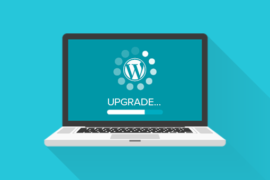Visual appeal is critical in web design. The look should appeal, evoke emotion, and ultimately improve your site’s traffic. Several components contribute to the overall beauty of a website, and images are one of them. Images tell stories and give life to your text. They convey information and make it easy to understand.
The image file format is essential. Using the right format for the right purpose means your design will look exactly as you intended. And you get the best balance of image quality and size.
While there are dozens of graphic formats available, JPG and PNG are the two most commonly used graphic formats on the Internet.
Let’s take a look at JPG and PNG features and the differences between both file formats.
Why should you care about image file formats?
As stated earlier, there are dozens of image file formats. Why would you worry about them?
Well, as simple as it sounds, the wrong format can mean low web image quality, missing detail, or heavy downloads. Let’s take a closer look at this.
Site load time
This topic is very dear to every website owner. Numerous studies show that if a site’s loading speed exceeds 3 seconds, then the probability of failure increases.
Heavy images mean longer loading times. In contrast, lighter images lead to faster load times and can improve your site’s performance.
Since some image formats are heavier than others, it would be brilliant to use lighter images on your site.
Site appearance
Anyone can tell when an image is not of good quality. Blurry and low-quality images can mislead you and your brand.
Some file formats provide prettier images than others.
Whichever format you use, there must be a balance between quality and performance. Let’s take a look at both file formats (PNG and JPG) and their features.
About the JPEG format
JPEG stands for Joint Photographic Experts Group and was developed in 1992. It is a lossy compressed image format. This means that the quality of the image decreases as it is compressed.
It is an ideal format for the web and an excellent choice for saving photos and images with elaborate colors and tints. The same as in the picture below:

JPEG files are one of the most popular file formats on the Internet for obvious reasons. They are small in size, easy to download, and can contain over 16 million different colors.
If you need to share a photo, JPEG is your best option. It is adequately optimized for photography and is supported on a wide variety of platforms.
Good to know: JPG and JPEG are the same. The original extension for the expert group joint photographic image was ‘JPEG.,’ But Windows (earlier versions) required a three-letter file extension, hence abbreviating JPEG to JPG. However, Linux uses JPEG as it didn’t have such a requirement.
PNG
PNG (pronounced “ping”) stands for Portable Network Graphics and was first released in 1996. It was developed as a non-proprietary and enhanced version of the Graphics Interchange Format (GIF).
This type of image format is best used for storing files with fewer colors, such as artwork, illustrations, and screenshots. It is a lossless compression file format. This means that it retains image quality even after its file size has been reduced.
PNG images are usually large files and are not great for photographs. They are best used for images with some text or line art. This is because PNG does a great job of making letter outlines, and thin lines of graphics appear crisp.
The PNG file type also gives you control over transparency, making it a right choice for saving logos.
The screenshot below was saved in PNG format.

You can see the letters, dark and light backgrounds, and sharp lines.
Let’s compare these formats.
PNG vs. JPG
PNG vs. JPG: compression
JPEG and PNG use different compression methods or codecs to store file data.
To begin with, JPEG relies on DCT (Discrete Cosine Transform) compression. This method works by dividing the image into parts of different frequencies. It then removes less critical frequencies. This is why we say JPEG is “loss.”
While this method is effective, some “unnecessary data” is irretrievably lost. As a result, every time you open, make changes, and save the JPEG file, quality drops. However, this drop in quality may go unnoticed.
PNG, on the other hand, relies on LZW (Lempel-Ziv-Welch) compression. It is a lossless data compression algorithm that results in the same image quality. PNG provides a near-perfect representation of the image.
PNG vs. JPG: size
Real photos and images with a lot of colors become smaller when you save them in JPEG format.
Here is a side-by-side image of a flower in both formats.

JPEG is an excellent choice for photographs and real-life images because you end up with much smaller files. Saving the image in PNG format would require more space and bandwidth.
On the other hand, PNG file sizes are smaller for illustrations, logos, line art, and more.
Thus, saving real color photographs and graphics in JPEG format results in smaller file sizes and better image quality. And screenshots, logos, and the like are better saved in PNG format for smaller file sizes and better quality.
PNG vs. JPG: transparency
PNG supports transparency, but JPEG does not, which allows you to create images that blend flawlessly with your site’s content. Similar to this:

Most editing software uses a checkered background to show the transparency of the image. This feature is great for logos.
JPG, on the other hand, has an opaque background.
How to Compress images?
Regardless of the file format used (JPEG or PNG), you may need to optimize/compress your images for the web. This means a smaller image size, more memory space, and a faster website.
How do you compress images for the web? There are two ways.
Using Special software
The first method involves using an image editing software (such as Photoshop) before uploading the image to your site. This process gives you more control over image quality.
WordPress plugins
Plugins optimize your graphic files by compressing them automatically while keeping their quality as good as possible.
Let’s take a look at some of the tools used to optimize images.
WP Smush
This WordPress plugin allows you to optimize your images and resize and compress them without any visible reduction in quality. With over 1 million active installs and a near-perfect 5-star rating, it’s a favorite plugin.
Compress JPEG and PNG images
This plugin compresses and optimizes JPGs and PNGs by integrating with TinyJPG and TinyPNG image compression services. On average, PNG images are automatically compressed 50-80%, and JPG images are compressed 40-60% without any apparent loss of quality.
Kraken WordPress Plugin
This plugin allows you to compress and optimize your images (JPG, PNG, and GIF formats) using the Kraken.io Image Optimizer API. It supports both lossy and lossless optimization modes.
PNG vs. JPEG: Conclusion
So PNG vs. JPEG: Which is Best for Your Site? It depends on the circumstances. They both serve different purposes well.
JPG formats are best for real images and images with a lot of color, such as photographs. PNG is ideal for line drawings, diagrams, iconic graphics, illustrations, document scans, architectural plans, logos, or any image with text.




